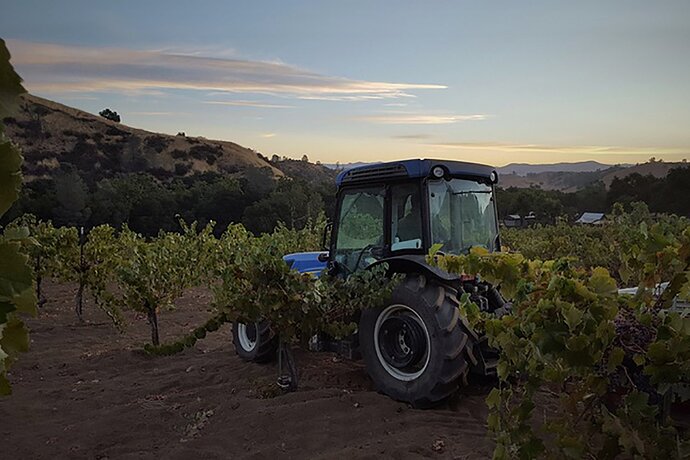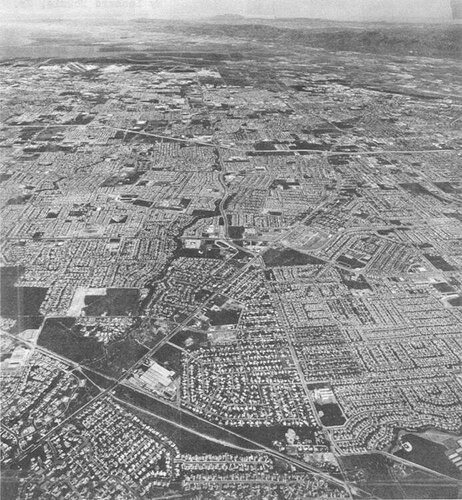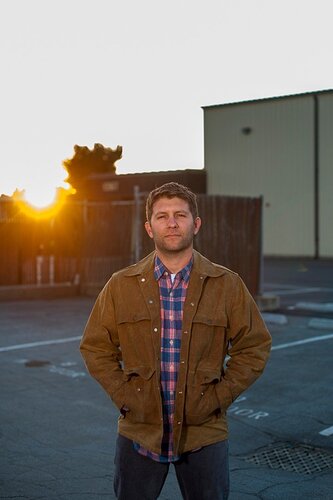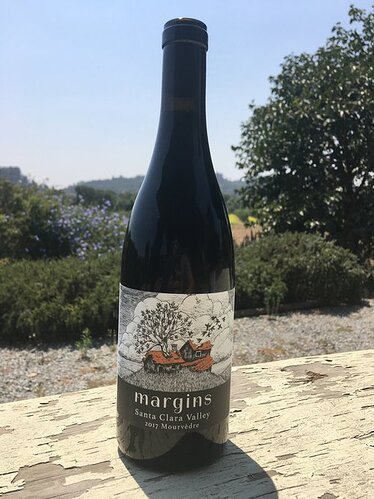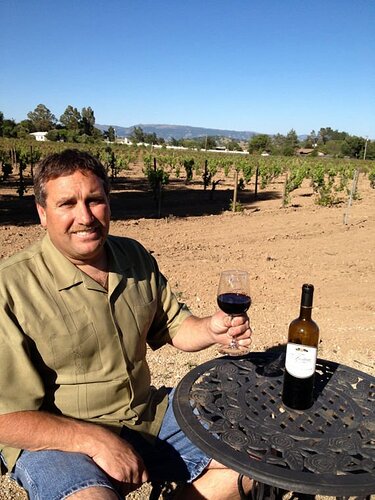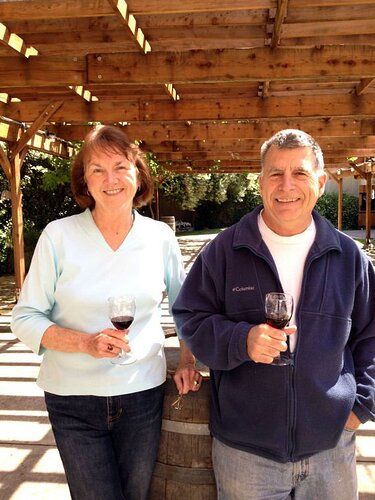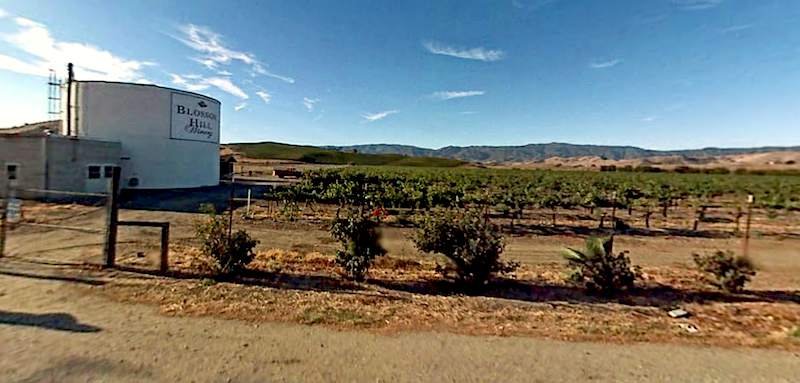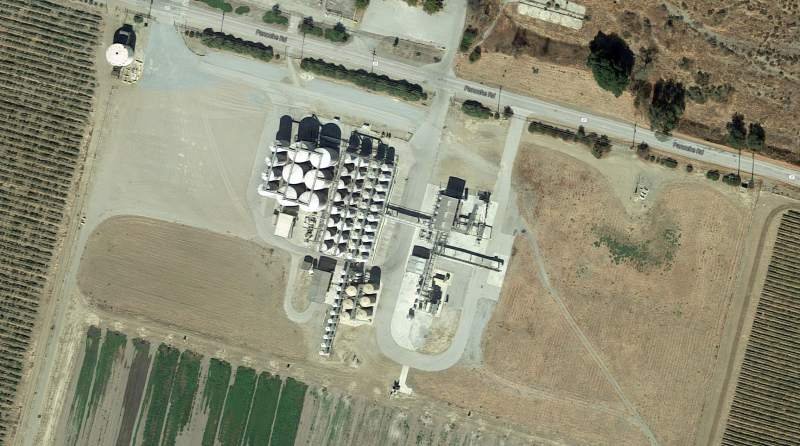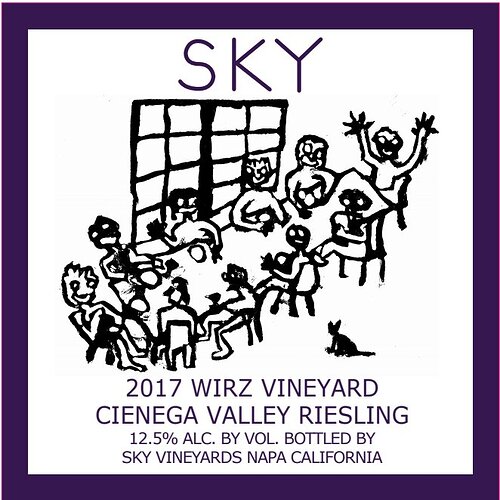WINC Wine Club Blog
“Enz Vineyard Delivers a Taste of History”
by Brooke Matthias
August 22, 2018
“‘Enz Vineyard’ is home to some of the oldest vines in California, dating back to 1887 when they were planted by original homesteaders and were discovered by the Enz family in 1967. Today, these vines are dry farmed and the picturesque vineyard location is tucked away in the valley in a sheltered basin, surrounded by mountains and blocking it from the rest of civilization…”
CalWineries
"Enz Vineyards
“In 1967, the Enz Family moved to a 300 acre ranch in the Lime Kiln wine region. There was a very old 15 acre vineyard on the property. These vines were planted by the original homesteaders in 1887…”
Historic Vineyard Society “Enz Vineyard” Profile
AnyPlaceAmerica: “Enz Vineyard” Map
Reddit: Wine, “Final Day for Picking for Harvest 2018 ‘Enz’” by Dirty & Rowdy
The following is a rather doom-and gloom portrait of the transformation of the rich, fertile Santa Clara Valley from an agricultural mecca into a land populated by cookie-cutter residential neighborhoods and commercial development:
The Alicia Patterson Foundation website
“The Santa Clara Valley’s ‘Appointment with Destiny’”
by Leonard Downie, Jr.
October, 1971
“…‘The land in the valley was of the very highest quality,’ as Karl Belser, a discouraged former county planner, has described it in a retrospective analysis written after he resigned his post. ‘Two alluvial fans had been laid down over the millennia by systems of streams which had coursed from the mountains to the sea during the rainy season, flooding the lowlands almost every year. Topsoil of fine loam thirty to forty feet deep in places overlaid water-bearing substrata of gravels and clays. A. tremendous underground water storage basin with a capacity of roughly one million acre-feet spread itself out beneath this wonderful soil. In many places the water gushed forth from artesian wells. Here was nature’s handsome gift: soils second to none in the state and perhaps the world, indigenous water enough, if properly used, to serve that soil adequately, and a mild climate with a year-round growing season.’…”
I performed a Google search for the “Enz Vineyard Lime Kiln Valley” to see just how many wineries are working with the fruit from this old-vine site. It seems like the “Enz Vineyard” is becoming a hot spot for the cool kids. In fact, Birichino is now bottling a vineyard-designated 2017 Mourvedre.
So, after rediscovering the above 1987 article, highlighting the Enz Family winery and vineyard, why are a red and a white Zinfandel, a Pinot St George, a DRY Orange Muscat, and even Chardonnay and Sauv Blanc among the wines once bottled by the Enz Family, but no Mourvedre?
Apologies if I have posted this link before…
SF Chronicle
“California Riesling’s Popularity, and Quality, Return”
by Esther Mobley
September 28, 2016
"…Like California Riesling at large, the ‘Wirz Vineyard’ is underappreciated, misunderstood. Its half-century-old Riesling vines are own-rooted, head-trained, dry farmed; some of them sit directly on the San Andreas Fault. Says Pat Wirz: ‘The Cienega Valley doesn’t get a lot of press, but I think it’s one of the best places for growing grapes in California.’
“…Large, value-oriented companies found huge success with Riesling, including Pacific Rim, whose founder Randall Grahm bought the entirety of the ‘Wirz Vineyard’ crop for 16 years. After Grahm sold Pacific Rim, Wirz’s main client was the mega-conglomerate Diageo, and then Constellation. By 2011, both had lost interest in Wirz’s Riesling and moved on to another aromatic white — Moscato.
“‘That’s when I started selling to the little guys,’ Wirz says. First, he sold grapes to the excellent Santa Cruz Mountains producers Big Basin and Thomas Fogarty. Quality-focused wineries like Bedrock, Precedent, Stirm, Ser and Waxwing have since followed, all bottling vineyard designates. There is a waiting list for Wirz’s fruit…”
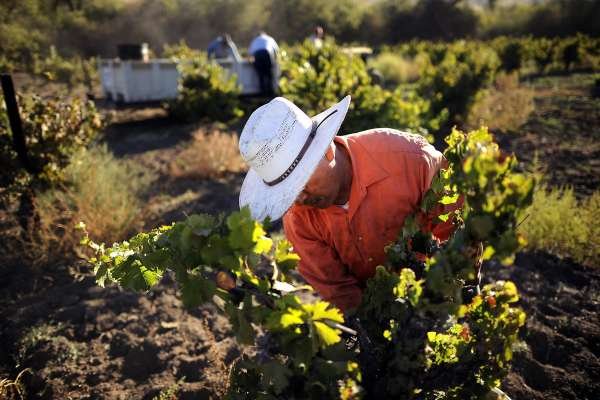
Comanche Cellars produces several wines from Monterey, Calaveras, Mendocino, Santa Clara, and San Benito Counties:
"…Siletto Ranch:
"…the Siletto family vineyards send roots deep into the calcarious soils of San Benito.
“These unique limestone soils and warm Mediterranean climate make a ideal site for growing Viognier, a grape traditionally grown in the northern Rhône River Valley in southern France. Wine industry veteran Ron Siletto planted the vineyard in the late eighties, and continues to farm the vineyard sustainably today. The wines express a unique allspice character and a flinty minerality on the finish, lending a site specific expression from vintage to vintage.”
Comanche Cellars - Wines
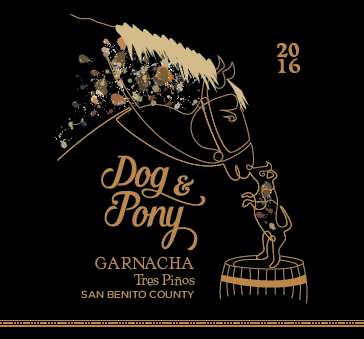
Comanche Cellars website:
412 Alvarado Street
Downtown Monterey
(831)-747-2244
Mr Ian Brand of I. Brand & Family, Le P’tit Paysan, La Marea, etc, is the featured guest on this episode of Cru podcast:*
“How to Produce Compelling Wines with Ian Brand”
"…Our guest this week did not set out to make the beautiful wines he does. He, and is incredible team, discovered great vineyards at the edge of sensible farming and decided to bring them to light.
“The farther they looked, the more they found – remote, challenging vineyards, with hard depleted soils, and intense sunlight tempered only by the coastal breeze. Vineyards capable of producing only the most idiosyncratic wines. Their goal as winemakers is to lightly polish the roughest edges and leave the idiosyncrasy intact. It is here in the back country, filled with individual character, where wines like I. Brand & Family, La Marea, and Le P’tit Paysan comes to life…”
Cru Podcast episode:
https://www.crupodcast.com/show/ianbrand
\
Mr Brand was awarded SF Chronicle “Winemaker of the Year”!
SF Chronicle
“2018 Winemaker of the Year: As California Wine Grows Increasingly Bifurcated, Winemaker Ian Brand Shows It’s Still Possible to Make Distinctive Wines of Place for Under $25”
by Esther Mobley
"…Like many California winemakers today, Brand is drawn to the idea of what California wines were like in a bygone era.
"…For some winemakers, pursuing this old-California ideal is simply a matter of picking their grapes a little earlier. Brand goes deeper. For him, it’s about helping to keep the only true conduits of the past — older vineyards — in the ground. It’s not a matter of following a trend. It’s heeding an imperative.
"One such vineyard is called ‘Enz’, a remarkable mountainside collection of head-trained, 120-year-old vines including curiosities like Cabernet Pfeffer in Hollister’s Lime Kiln Valley. After years of selling most of its grapes to Kenneth Volk Winery, ‘Enz’s’ star has deservedly been rising as winemakers like Brand, Tegan Passalacqua and Hardy Wallace have bottled its Mourvedre — ‘Mataro,’ if you want to be old-fashioned about it.
“In an unusual arrangement, Brand has become a kind of ambassador for the vineyard, helping the Enz family put their grapes in the hands of ambitious wineries from the North Bay like Broc, None Such and Newfound. Wouldn’t Brand rather just keep more of the fruit for himself, to make more of his excellent (and it is really excellent) Mourvedre? He shrugs.
“‘This vineyard is the crown jewel of this area,’ he says. ‘It needs to be seen.’…”
The number of vineyards in the Santa Clara Valley is hard to ascertain. Most of the searches I have performed related to this topic result in lists of the wineries found around the county.
To complicate things, the websites for many producers do not include any definitive facts about their fruit sources, be they located on a winery’s estate or otherwise.
While perusing the internet for “Santa Clara Mourvèdre”, I managed to discover a new project and the name of a specific growing site.
Margins Wine
"2017 ‘Santa Clara Valley’ Mourvèdre
(71 cases produced)
“A last minute addition to the harvest menu last fall, this beautiful wine will hopefully be part of the Margins family for many years to come. My first attempt (ever!) at Mourvèdre has surprised me with its diverse set of characteristics which have continually evolved to include red and black fruits, chocolate, forest, herbs, and even tropical fruit.”
From the 2018 Mourvedre data sheet:
“…Ed Sattler planted his backyard vineyard in 2009 and has been intimately involved in farming it since the beginning. This hot, dry site in the foothills of the southern Santa Cruz Mountains–but not high enough in elevation to be considered part of the SCM AVA-- has an intense diurnal swing, bringing cool temperatures every evening and lending to the preservation of acidity in the grapes…”.
Margins Wine website:
• Food & Wine Aesthetics
September 9, 2018
“Margins Wine: In Search of Difference”
• Raw Wine: Profile of Margins Wine
The label for the Margins “Santa Clara Valley” Mourvèdre states that the grapes came from the “Sattler Vineyard”. Fernwood Cellars has offered a Mourvèdre from the same site in the past.
According to The VinGard webpage’s details on the Margins Mourvèdre in its overview of the 2018 Wine Fare:
“…Vineyard: ‘Sattler’s Vineyard’, the backyard of Sattler Family in San Martin.
Farming: Organic, dry farmed…”
Here is my email Q&A with Ms. Megan Bell on the “Mourvèdre Appreciation” thread: link.
At the moment, I have no other information about the “Sattler’s Vineyard”…
One of the newer wineries sourcing fruit from the “Enz Vineyard” in the Lime Kiln Valley is Penville Wine. Here is an interview with Patton Penhallegon, whose day-job is Dragonette Cellars, from The Wine Write blog:

The Wine Write
“A Visit With Patton Penhallegon of Penville Wine”
December 10, 2018
"…I’m now working with a fantastic vineyard called ‘Enz’. It is just south of Hollister, about forty-five miles east of Monterey. It’s about a three hour drive north for me. It’s an incredible spot. The vineyard was planted in 1850 by the family that still owns it. They went out there during the Gold Rush. They didn’t find gold, but they did find granite and limestone. The family still has an operable granite quarry. There was a saloon on the property. The vines were planted with the thought of selling the wine in that roadhouse.
“The vineyard is all own-rooted. It was replanted in about 1920. There are some California heritage varieties planted. I’m going after Mourvedre, but there’s also Cabernet Sauvignon, Pinot Noir, Muscat, and a lot of other fun things grown there. My getting this fruit also has a Stolpman connection. Pete Stolpman knew Ian Brand. Ian manages ‘Enz Vineyard’. When a buyer dropped off the ‘Enz’ list, I took his place. I’m in good company. Tegan Passalacqua, the winemaker at Turley, has a personal project called Sandlands. He’s making a single vineyard Mourvedre from ‘Enz’ for that label. Rajat Parr gets fruit for one of his projects from ‘Enz’, too. It’s a special place.”
Penville Wine website:
In a search for “San Benito Carignan”, I stumbled across a 2013 article about the Fortino Winery.
San Benito dot com
“Fortino Winery: Fine Wine and Good Times”
by Bev Stenehjem / Hollister Free Lance
May 9, 2013
"Voted best winery in Gilroy for three consecutive years, Fortino Winery is one of the most beloved wineries in Santa Clara Valley. Fortino Winery has been in business since 1970 when Ernest and Marie Fortino bought an existing vineyard on Hecker Pass in Gilroy. Bringing winemaking traditions from their hometown of Calabria, Italy, Ernest and Marie built a reputation for quality wines and, in 1978, established one of the very first wine clubs in California.
"…Gino told me that when his parents started the winery, it was one of only 240 bonded wineries in all of California (presently there are 3,400). He grew up helping out in the vineyard, ‘doing whatever needed to get done.’ In 1995, his parents were ready to pass the torch of their well-established business to the next generation – and so Gino and his sister, Teri, took over.
"…Gino also made the switch from aging wine in big tanks to smaller barrels in order to reduce oxidation and improve flavors. He prefers to use older oak barrels that impart less oak and vanilla flavors than new barrels.
“…Fortino Winery has a total of 50 planted acres, which include Estate Merlot, Cabernet, Carignan, Charbono, Chardonnay, Riesling and Pinot Noir.
“…Out of 80 acres of Charbono vines in all of California, Gino has three of them. The grapes produce a dry, full-bodied wine – similar to a Barbera – that goes well with a juicy steak…”
Fortino Winery website:
Library of Congress
American Folklore Center
Collection: “Italian Americans in the West Project”
AFC 1989/022
September 7, 1989
- Audio Recording: "Interview with Ernesto Fortino, Gilroy, California, part 1"
- Audio Recording: "Interview with Ernesto Fortino, Gilroy, California, part 2"
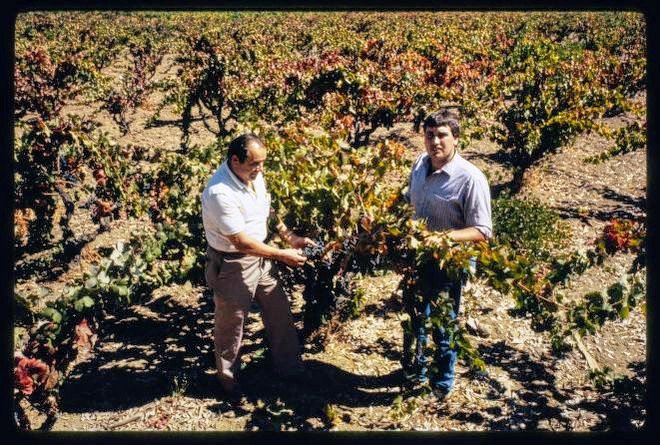
Image Gallery:"Grape Harvest at Fortino Winery; Gilroy, California" (20 photographs)
Author Bev Stenehjem’s book Wineries of Santa Clara Valley is only one example of her dedication to the preservation and promotion of the region’s growers and producers.
It is very easy to find articles written by her in the area’s newspapers. I suppose she is the resident expert on wine history of the Valley.
• Arcadia Publishing: Wineries of Santa Clara Valley by Bev Stenehjem
• South Valley Author Profile: Bev Stenehjem
• San Benito.com Author Profile: Bev Stenehjem
I wrote an email to Ms Stenehjem in December of 2017, asking for information on the Mourvèdre vineyards of the Santa Clara AVA. Here is a response from her:
"…I’m glad you found my article - I have been writing about our local wineries for the last 7 years - promoting them in our local newspapers and local magazines.
"I also wrote a historical photo book, The Wineries of Santa Clara Valley - which you may want to get a hold of. I spent time researching the oldest wineries and their families in Santa Clara County. My book has some good information about which varietals were/are planted in our valley.
“You may want to talk to Gene and George Guglielmo - brothers who own the oldest, continuously owned/operated family winery in Santa Clara Valley (they are Chapter 1 of my book!). Gene and George are extremely knowledgable about the history of our wine industry. The other person who is very knowledgeable about our history would be Gino Fortino - the owner/winemaker at Fortino Winery (Fortino Winery also has a chapter in my book!).”
“Warm regards,
Bev Stenehjem
Freelance Writer/Author”
Thanks to Randy Smith for alerting me to the recent interview with Ian Brand on The Wine Write blog:
The Wine Write blog
“Our Chat With Monterey Winemaker Ian Brand”
by Randy Smith
December 31, 2018
"…The Wine Write: ‘One of the things you’re known for is finding some unique vineyards.’
"Ian: 'Sure. I think I may come at it from a different direction than a lot of people. It isn’t that I’m some overly passionate about a specific varietal. I’m a problem solver. I want to work with what’s here and then extend that out to what I do. I had been working for Big Basin making big, oaky red wines for four years. I got two vintages in at Monterey and realized that model wasn’t working here.
"'Rather than fight uphill, I decided to learn what would work here. I began to tailor the style of wine I make to the raw material. You run into problems in the winery when you try to over-amplify things or make the grape into something it’s not. I don’t want to try to make mediocre fruit off a young vine into a ninety-five point wine. Or try to make a lean, mineral driven wine from big, ripe fruit. That’s when you run into issues.
"‘When I matched my winemaking to the fruit, that’s when the wines made from these unsung vineyards started clicking. All of the work I do is in about a fifty mile radius of Salinas. It’s a concise area. It’s also a place nearly no one else is focusing on. I was in the right place in the right time. The price of fruit here is more affordable. I don’t understand from a business standpoint how you can pay as much as you do for fruit on the North Coast and still function. I’m in a nice scene to work with high quality, lesser known vineyards. No one else is in here with the precise focus I have. The people I sometimes overlap with are good friends.’
"…The Wine Write: ‘Who were some of these farmers selling fruit to before you came along?’
"Ian: ‘It varies. “Enz Vineyard” was leased to Ken Volk for years and years. That’s a guy who doesn’t get enough credit for doing work with unsung grapes while no one was paying attention. He was really ahead of his time in terms of what he was looking for in vineyards.’
"…The Wine Write: ‘How involved do you get in the farming for your fruit?’
"Ian: 'I’m intimately involved in a couple of vineyards. I consult with the farming in those. In a vineyard like “Enz”, I’m dealing with Russell Enz, who grew up on the property. I’m not going to farm it with more touch than him. I might ask him to pull a few more shoots or something along those lines…little tweaks here and there.
"'It’s a long process of gaining trust with your farmers. Another bullsh*t thing some winemakers do is to come from wherever they’ve been and think they know all kinds of stuff. They may walk into a vineyard and demand this or that. That’s a recipe for a short-term relationship.
"‘I have vineyards in various states of positioning. Some are bookmarks. I’m not ready to make leaps there yet. I may know that vineyard’s potential. I may even have an idea of how that fruit fits in our brands. It takes awhile to learn a vineyard. I don’t want to decide in year two that I want the grower to do specific stuff. They may be doing certain cultivation practices because they know there are tremendous swings in vintages. Just because I see something one vintage doesn’t mean the next vintage won’t swing back the other way. After I’ve been there five or six vintages, I get a real sense about the vineyard. It’s important to have restraint. Otherwise you lose the trust of the growers and the owners…’
I’m a problem solver.
Thanks for posting this, Drew.
Thanks, Ian.
I really dug the way you expressed ideas so concisely in this interview!
This article from 2013 briefly details the history and current state of Morgan Hill Cellars, formerly Pedrizzetti Cellars:
SanBenito.com
“100-Year-Old Winery Continues with 3rd Owner”
by Bev Stenehjem
June 13, 2013
"Morgan Hill Cellars is the oldest winery in our region and celebrates its 100th anniversary this year. The winery was founded in 1913 by an Italian immigrant named Camillo Colombano who planted Barbera rootstock brought over from Italy. From 1945 to 2006, the Pedrizzetti family owned and operated the winery. Changing hands for the third time in 2006, it is now owned by Mike and Maryclaire Sampognaro.
"…The Pedrizzetti property was 10 acres with two homes ready to move into. Although there were no longer any grapevines, the property included a winery complete with a grape crusher, 350,000 gallon capacity holding tanks and a 1,000 case-per-day bottling line. And best of all, there were experienced winemakers who wanted to stay.
“…When asked for recommendations, Maryclaire advises wedding planners to serve the Chardonnay and Zinfandel, both crowd pleasers…”
Morgan Hill Cellars website:
http://www.morganhillcellars.com
Library of Congress
American Folklife Center
Collection: “Italian Americans in the West Project” (AFC 1989/022)
Audio Recording: “Interview with Ed Pedrizzetti and Phyllis Pedrizzetti, Morgan Hill, California”
September 13, 1989
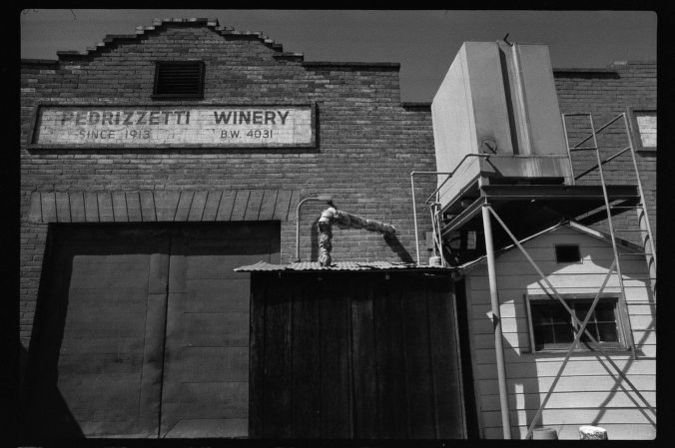
Image Gallery: “Pedrizzetti Winery, Morgan Hill, California”
September 13, 1989 (34 Photographs)
Image Gallery: “Pedrizzetti Winery, Morgan Hill, California”
September 13, 1989 (34 Photographs)
The purchase of the Blossom Hill Winery from Treasury Wine Estates by Delicato Family Winery in 2017 did not draw much attention from the press, nor here on the WB forum. This is not hard to understand, as the fruit is inevitably going to be blended away, as it has for some years, into anonymous “Central Coast” appellation bargain wines.
Here’s the skinny from the original Delicato press release:
“Delicato Family Vineyards Announces Acquisition of Paicines Winery”
"NAPA, Calif. (April 5, 2017) – Delicato Family Vineyards (Delicato) today announced it has acquired the Central Coast California Blossom Hill Winery from Treasury Wine Estates. The acquisition is part of Delicato’s ongoing premiumization and growth strategy on the heels of the recent announcement of its strategic investment in Sonoma’s luxury portfolio of brands, V2 Wine Group. The winery, which will now be called Alba Coast Winery, is located in the warm Paicines AVA in San Benito County and has a long history of premium winemaking. The terms of the transaction will remain confidential.
“The name Alba means ‘dawn’ or ‘sunrise’ in Italian and reflects a ‘new dawn’ for the pioneering winery, which was established during early Central Coast wine and vineyard development,’ noted Delicato President and CEO Chris Indelicato. ‘My grandfather started with a single winery almost 100 years ago and as we continue to grow our business and expand our luxury portfolio, taking steps to ensure quality winemaking will remain our top priority.’
“The Alba Coast Winery provides Delicato with an additional 4 million cases of growth capacity. The acquisition does not include any brands but will be used to support the growth of Delicato’s premium and ultra-premium wines from the Monterey and Central Coast regions such as Noble Vines, Gnarly Head, Z. Alexander Brown, Diora and Irony. The winery will also support two of the company’s premier Central Coast vineyards in the San Bernabe AVA and Santa Lucia Highlands as well as a number of grower partners.”
Benito Link article
North Bay Business Journal article
The Beverage Journal article
The Alba Coast/Blossom Hill Winery and its vineyards stand where the original Almadén facility operated for decades in the Paicines area of San Benito County. According to an article in Wines & Vines, “The Alba Coast Winery provides Delicato with an additional 20,000 to 30,000 tons of capacity, or production of up to 4 million cases.”
The original vines are long-gone, excepting (perhaps) a portion of the vineyard that now is owned by either Donati or Pinnacles.
Drew you are the man
Keep up the good work!
It has been confirmed!!! ![]()
According to the website of Mt Veeder’s legendary Sky Vineyards:
“2017 Sky Vineyards Riesling from ‘Wirz Vineyard’ in the Cienega Valley. Aged in stainless steel, 12.5% alcohol, 31 cases produced.”
Sky Vineyards website:
http://www.skyvineyards.com/sky/
19th Century Sanborn Fire Insurance Maps of San Benito County towns are listed below. The company produced similar maps for counties across California, including Santa Clara and Santa Cruz.
Library of Congress
“Sanborn Fire Insurance Map from Hollister, San Benito County, California”(Part 1)
Sanborn Map Company (August, 1886)
“Sanborn Fire Insurance Map from Hollister, San Benito County, California” (Part 2)
Sanborn Map Company (August, 1886)
“Sanborn Fire Insurance Map from Hollister, San Benito County, California”
Sanborn Map Company (May, 1892)
“Sanborn Fire Insurance Map from Tres Pinos, San Benito County, California”
Sanborn Map Company (February, 1888)
“Sanborn Fire Insurance Map from Tres Pinos, San Benito County, California”
Sanborn Map Company (May, 1892)
“Sanborn Fire Insurance Map from Tres Pinos, San Benito County, California”
Sanborn Map Company (April, 1895)
*** EDIT ***
The following blog entry explains the historical significance and research applications of the Sanborn Insurance Maps.
Santa Cruz Trains Blog
“Sources: Sanborn Map Company”
October 16, 2020
"The Sanborn Map Company held a near total monopoly of fire insurance maps in the United States from the 1870s through to the 1970s. The maps were used by fire insurance company underwriters to assess the cost of coverage and the risks. As cities grew in size throughout the nineteenth century, it became harder for individual insurance companies to visit places personally to make such assessments, so mapping companies were formed to produce reliable, detailed surveys of risks instead.
"…Library of Congress, Sanborn Maps Collection:
“The collection held by the Library of Congress is extensive, full color, and spans much of the country. But due to copyrights, it also doesn’t have everything available online so you will have to visit Washington, D.C. to see the whole collection. The good news is that there are many free maps available for download at good resolutions.”
"…University of California, Santa Cruz, Legacy Digital Collections:
"For many years, the UCSC collection of maps was the go-to place for local historians, but the collection pales in comparison to the Library of Congress site and the October 2020 refresh of the Legacy Digital Collections website removed the ability to download maps, making the site even less useful. Still, there are several maps and versions of maps that aren’t available online from the Library of Congress and the website navigation is still relatively easy. Furthermore, high resolution versions can be viewed on the website.
"…ProQuest Digital Sanborn Maps, 1867–1970:
"For those privileged with special access from select businesses and universities, another great source of maps is the ProQuest database, which is sponsored by the company that still owns the in-copyright Sanborn maps. The maps from this database can be downloaded at high resolution, but are not in color for some unexplained reason.
"…Environmental Data Resources (EDR):
“This is the company that owns the copyrights to all maps still in copyright and access outside of ProQuest is on a per-map basis. Basically, people can request professional copies of original maps for research, publishing, or legal uses but even creating a paid account on the website requires contacting the firm. This place should only be used as a last resort and is still not guaranteed to satisfy since so many of the later Sanborn maps are paste-ups rather than new maps.”
Library of Congress
Reading Room
Sanborn Fire Insurance Maps:
“Cities of California”
This article covers some of Gilroy’s history and the lands under cultivation, with a particular focus on the Hecker Pass area.
Morgan Hill Life
“Take a Hike . . . with Mike Monroe – Learn About the Region’s Viticulture History with Talk at Solis Winery”
by Mike Monroe
August 24, 2018
"…We have such a rich history, too much to convey in one short column. So I decided initially to focus my attention on the Hecker Pass corridor and the Uvas Valley, and yet there were still too many compelling stories that I really feel should be remembered. Now my hope is that more vineyard tales will be forthcoming in the months ahead.
"For the first narrative then, I chose the opening pages of the Solis Winery because it has several behind the scenes twists and turns which I thought would be fun to highlight.
"…Much of Hecker Pass from Santa Teresa westward is a part of the original Solis land grant. Rancho Las Uvas and Rancho de Solis touch each other near the intersection of Day/Uvas Roads with Watsonville Road. The original hand-drawn map of Rancho de Solis, called a ‘diseno’, shows the original ‘casa’ located about where Kirigin Cellars is today. The map identifies the first residence as belonging to the ‘el solicitante’ or the applicant — the Castro family utilizing the Solis structure, perhaps made of adobe or redwood.
“Shortly after the Gold Rush of 1849, John Hicks Adams, later the Sheriff for Santa Clara County, acquired much of Rancho de Solis and began to sell off parcels to the new arrivals. It is here we must recognize the investigative work of Ernest P. Peninou (1916-2002) who compiled, but never fully published, a history of California’s viticultural districts including those in Santa Clara County. He noted that the ‘first winery of any size near Gilroy was operated by Charles Francois, an Alsatian who arrived in the Rancho de Solis area in 1868 near the intersection of Redwood Retreat and Watsonville Roads. In the early 1880s, two English relatives, by the last name of Hague, bought some 50 acres near the intersection of Day and Watsonville roads setting out a wide variety of grapes and naming the vineyard ‘the Solis’. In 1889, they saw the need for a new and larger winery than any yet built in the vicinity. A cooperative was formed with other local growers and they organized the Solis Winery and Fruit Company. The winery was constructed above the vineyard, which sloped up from the road by tunneling into the hillside to provide storage cellars of even temperature.’ This vineyard was later purchased by the Bonesio family (now Kirigin Cellars).”
San Benito
“Yesterday and Today: Wine Flowed from Gilroy’s Farms”
October 6, 2006
Kirigan Cellars website:
https://kirigincellars.com/
Kirigan Cellars Instagram profile:
https://www.picuki.com/profile/kirigincellars
According to the bio from Morgan Hill Life:
“Mike Monroe coordinates local discovery outings to great places like wineries, parks, museums in the Valley of Heart’s Delight. Visit thevalleyofheartsdelight.org”
Morgan Hill Life
“Take a Hike … with Mike Monroe: Learn About the History of Hecker Pass Winery on Saturday Stroll”
by Mike Monroe
October 18, 2018
"…The Mossi and Scalmanini families held the Solis Winery & Fruit ranch until the late 1960s when portions of the property were subdivided. At one time the ranch exceeded more than 250 acres and extended across both sides of Watsonville Road, encompassing land near the borders of where today’s Sycamore Creek and Dorcich Family Vineyard are located. The Solis Winery name lay dormant until the Vanni family chose it for their winery property in 1989.
“… So here is ‘the rest of the story’: The Hague family, in association with some other local grape growers, established the Solis Winery and Fruit about 1890 near where Kirigin Cellars is today. One of those ‘other local growers’ was John Mossi. He was born in Buenos Aires, Argentina in 1872 and arrived in Santa Clara Valley in 1892. Mossi worked for two ranches in the Morgan Hill area until 1899 when ‘he rented the vineyard property of P.H. Cordes, for 11 years serving as the vineyardist and winemaker. In 1910, he purchased about 40 acres of barren land on Watsonville Road, and this he has since developed into a fine orchard and vineyard’ (Source: The History of Santa Clara County)…”.
Morgan Hill Life
“Take a Hike … with Mike Monroe: Explore One of the Last Remaining Orchards in the Valley of Hearts Delight”
by Mike Monroe
November 16, 2018
Morgan Hill Life
“Take a Hike . . . with Mike Monroe: Swap stories of Italian foods, recipes and tour Hecker Pass Winery”
by Mike Monroe
January 13, 2019
